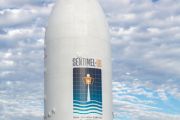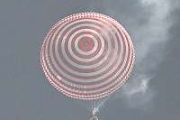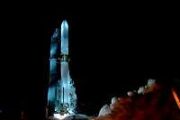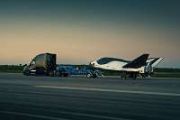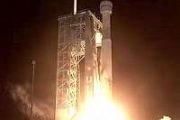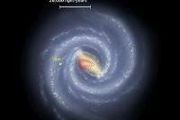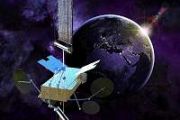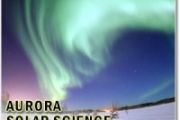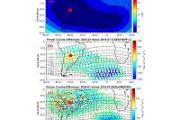
Copernical Team
Indonesia aims to build cutting-edge spaceport but faces obstacles
 Indonesia aims to launch 19 satellites into low-Earth orbit next year, part of an ambitious plan to move the country into the forefront of the world's growing space industry and reduce its reliance on other countries for its satellite data.
The broader program, known as the 2045 space map, is set to begin next year. Officials hope to boost Indonesia's economy and drive foreign direct inves
Indonesia aims to launch 19 satellites into low-Earth orbit next year, part of an ambitious plan to move the country into the forefront of the world's growing space industry and reduce its reliance on other countries for its satellite data.
The broader program, known as the 2045 space map, is set to begin next year. Officials hope to boost Indonesia's economy and drive foreign direct inves Icesat-2 Resumes Data Collection After Solar Storms
 the space agencys ICESat-2 satellite returned to science mode on June 21 UTC, after solar storms in May caused its height-measuring instrument to go into a safe hold. The ICESat-2 team restarted the missions instrument, a lidar called the Advanced Topographic Laser Altimeter System (ATLAS), which is once again collecting precise data on the height of Earths ice, water, forests and land cover. No
the space agencys ICESat-2 satellite returned to science mode on June 21 UTC, after solar storms in May caused its height-measuring instrument to go into a safe hold. The ICESat-2 team restarted the missions instrument, a lidar called the Advanced Topographic Laser Altimeter System (ATLAS), which is once again collecting precise data on the height of Earths ice, water, forests and land cover. No Dhruva Space partners with Kinis to provide space-based IoT connectivity in India
 In a groundbreaking initiative to fortify global satellite connectivity, full-stack Space Engineering solutions provider Dhruva Space and France-based satellite operator global IoT connectivity provider Kinis have strengthened their collaboration to introduce Kinis IoT connectivity in India, and to launch a Kinis IoT payload on Dhruva Space P-30 satellite.
This partnership is focused on Dh
In a groundbreaking initiative to fortify global satellite connectivity, full-stack Space Engineering solutions provider Dhruva Space and France-based satellite operator global IoT connectivity provider Kinis have strengthened their collaboration to introduce Kinis IoT connectivity in India, and to launch a Kinis IoT payload on Dhruva Space P-30 satellite.
This partnership is focused on Dh Geoscientists dig into why we may be alone in the Milky Way
 New research by University of Texas at Dallas geoscientist Dr. Robert Stern and a colleague suggests a geological explanation for why conclusive evidence for advanced extraterrestrial (ET) civilizations has not been found, even though the Drake equation predicts that there should be many such civilizations in our galaxy capable of communicating with us.
In a study published online April 12
New research by University of Texas at Dallas geoscientist Dr. Robert Stern and a colleague suggests a geological explanation for why conclusive evidence for advanced extraterrestrial (ET) civilizations has not been found, even though the Drake equation predicts that there should be many such civilizations in our galaxy capable of communicating with us.
In a study published online April 12 This desert moss has the potential to grow on Mars
 The desert moss Syntrichia caninervis is a promising candidate for Mars colonization thanks to its extreme ability to tolerate harsh conditions lethal to most life forms. The moss is well known for its ability to tolerate drought conditions, but researchers report June 30 in the journal The Innovation that it can also survive freezing temperatures as low as -196C, high levels of gamma radiation,
The desert moss Syntrichia caninervis is a promising candidate for Mars colonization thanks to its extreme ability to tolerate harsh conditions lethal to most life forms. The moss is well known for its ability to tolerate drought conditions, but researchers report June 30 in the journal The Innovation that it can also survive freezing temperatures as low as -196C, high levels of gamma radiation, Firefly Aerospace Successfully Launches Eight CubeSat Satellites
 Firefly Aerospace successfully launched its Alpha rocket carrying eight CubeSat satellites into space on Tuesday night from California's Vandenberg Space Force Base. This mission marks a significant achievement following a previous scrub due to ground systems issues.
The CubeSats were launched under NASA's Launch Services Program Venture, providing satellite developers at U.S. universities
Firefly Aerospace successfully launched its Alpha rocket carrying eight CubeSat satellites into space on Tuesday night from California's Vandenberg Space Force Base. This mission marks a significant achievement following a previous scrub due to ground systems issues.
The CubeSats were launched under NASA's Launch Services Program Venture, providing satellite developers at U.S. universities Tracking Ariane 6 as it soars over the Azores
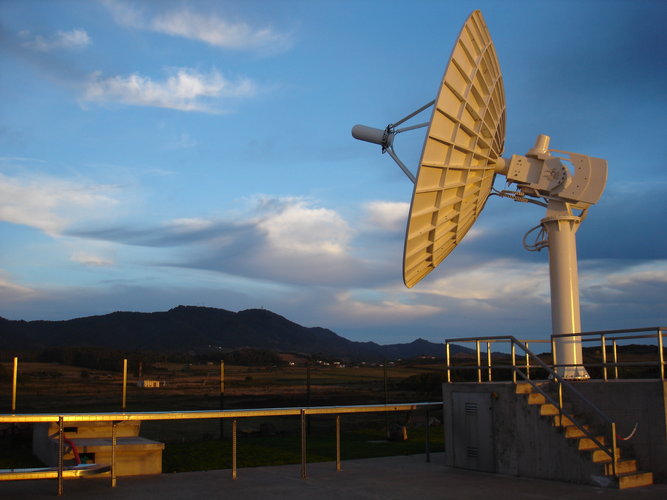
A network of ground stations around the world, including two owned by ESA, will track the debut flight of Europe’s new Ariane 6 rocket. They will monitor key phases of the flight and gather telemetry and video that will be used to analyse the rocket’s performance and optimise future launches.
Behind the Scenes of a NASA 'Moonwalk' in the Arizona Desert
 NASA astronauts Kate Rubins and Andre Douglas recently performed four moonwalk simulations to help NASA prepare for its Artemis III mission. Due to launch in September 2026, Artemis III will land two, yet-to-be-selected, astronauts at the Moon's South Pole for the first time.
Traveling to space requires immense preparation, not just for the astronauts, but for the hundreds of people who wo
NASA astronauts Kate Rubins and Andre Douglas recently performed four moonwalk simulations to help NASA prepare for its Artemis III mission. Due to launch in September 2026, Artemis III will land two, yet-to-be-selected, astronauts at the Moon's South Pole for the first time.
Traveling to space requires immense preparation, not just for the astronauts, but for the hundreds of people who wo iSpace lunar lander RESILIENCE achieves test milestone
 ispace, inc. (ispace)(TOKYO: 9348) report that the flight model of its HAKUTO-R Mission 2 RESILIENCE lunar lander has successfully completed thermal vacuum testing and remains on schedule for a Winter 2024 launch.
The testing was completed at the Japan Aerospace Exploration Agency (JAXA) Tsukuba Space Center in Tsukuba, Japan, where the agency operates a large testing facility. The flight
ispace, inc. (ispace)(TOKYO: 9348) report that the flight model of its HAKUTO-R Mission 2 RESILIENCE lunar lander has successfully completed thermal vacuum testing and remains on schedule for a Winter 2024 launch.
The testing was completed at the Japan Aerospace Exploration Agency (JAXA) Tsukuba Space Center in Tsukuba, Japan, where the agency operates a large testing facility. The flight Moon 'swirls' could be magnetized by unseen magmas
 Lunar swirls are light-colored, sinuous features on the Moon's surface, bright enough to be visible from a backyard telescope. Some people think they look like the brushstrokes in an abstract painting. But these are not mere artistic flourishes: NASA images show that the tendrils from some lunar swirls extend for hundreds of miles.
Lunar swirls have defied easy explanation, but recent mode
Lunar swirls are light-colored, sinuous features on the Moon's surface, bright enough to be visible from a backyard telescope. Some people think they look like the brushstrokes in an abstract painting. But these are not mere artistic flourishes: NASA images show that the tendrils from some lunar swirls extend for hundreds of miles.
Lunar swirls have defied easy explanation, but recent mode 




